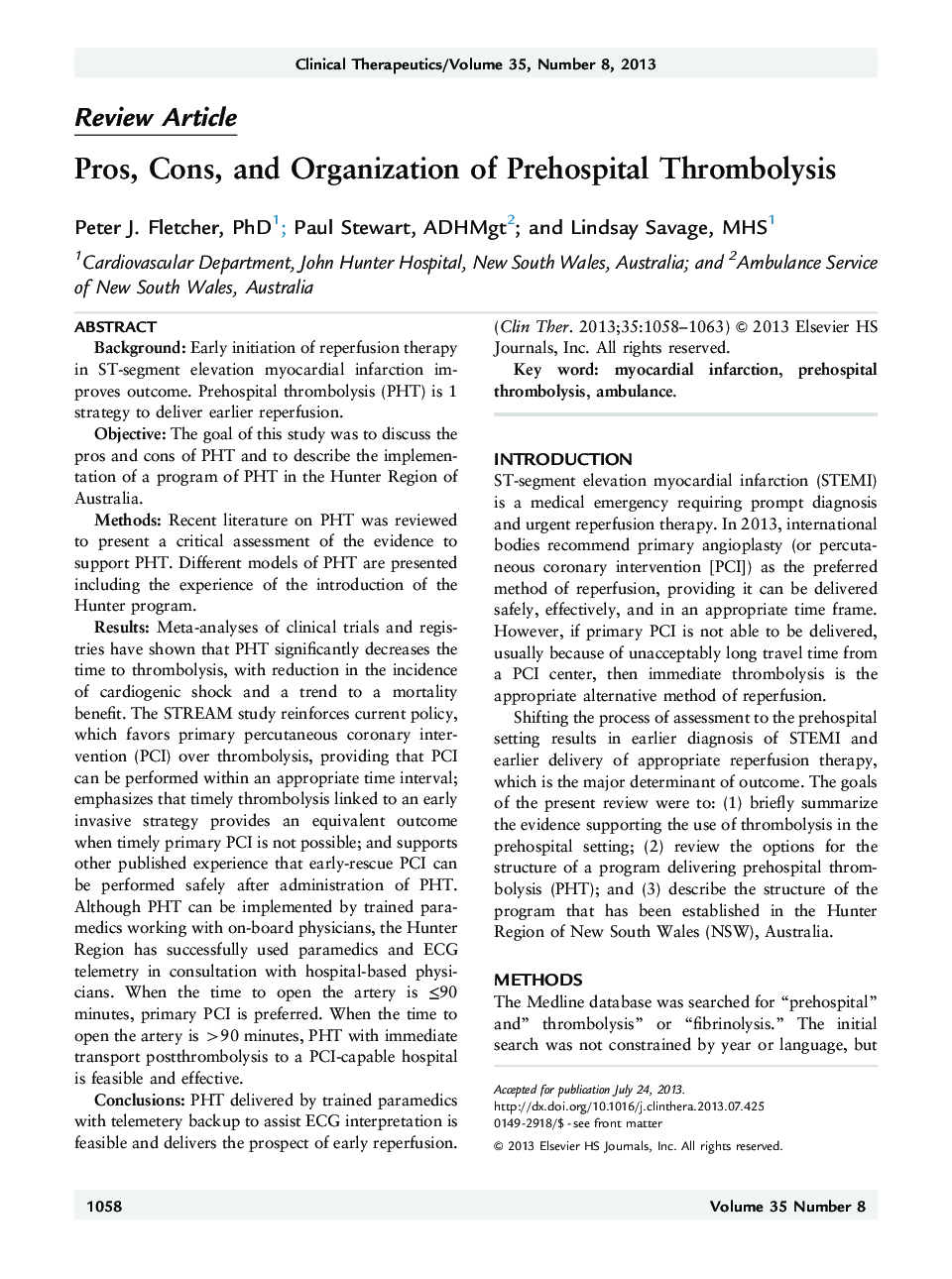| Article ID | Journal | Published Year | Pages | File Type |
|---|---|---|---|---|
| 2527120 | Clinical Therapeutics | 2013 | 6 Pages |
BackgroundEarly initiation of reperfusion therapy in ST-segment elevation myocardial infarction improves outcome. Prehospital thrombolysis (PHT) is 1 strategy to deliver earlier reperfusion.ObjectiveThe goal of this study was to discuss the pros and cons of PHT and to describe the implementation of a program of PHT in the Hunter Region of Australia.MethodsRecent literature on PHT was reviewed to present a critical assessment of the evidence to support PHT. Different models of PHT are presented including the experience of the introduction of the Hunter program.ResultsMeta-analyses of clinical trials and registries have shown that PHT significantly decreases the time to thrombolysis, with reduction in the incidence of cardiogenic shock and a trend to a mortality benefit. The STREAM study reinforces current policy, which favors primary percutaneous coronary intervention (PCI) over thrombolysis, providing that PCI can be performed within an appropriate time interval; emphasizes that timely thrombolysis linked to an early invasive strategy provides an equivalent outcome when timely primary PCI is not possible; and supports other published experience that early-rescue PCI can be performed safely after administration of PHT. Although PHT can be implemented by trained paramedics working with on-board physicians, the Hunter Region has successfully used paramedics and ECG telemetry in consultation with hospital-based physicians. When the time to open the artery is ≤90 minutes, primary PCI is preferred. When the time to open the artery is >90 minutes, PHT with immediate transport postthrombolysis to a PCI-capable hospital is feasible and effective.ConclusionsPHT delivered by trained paramedics with telemetery backup to assist ECG interpretation is feasible and delivers the prospect of early reperfusion.
